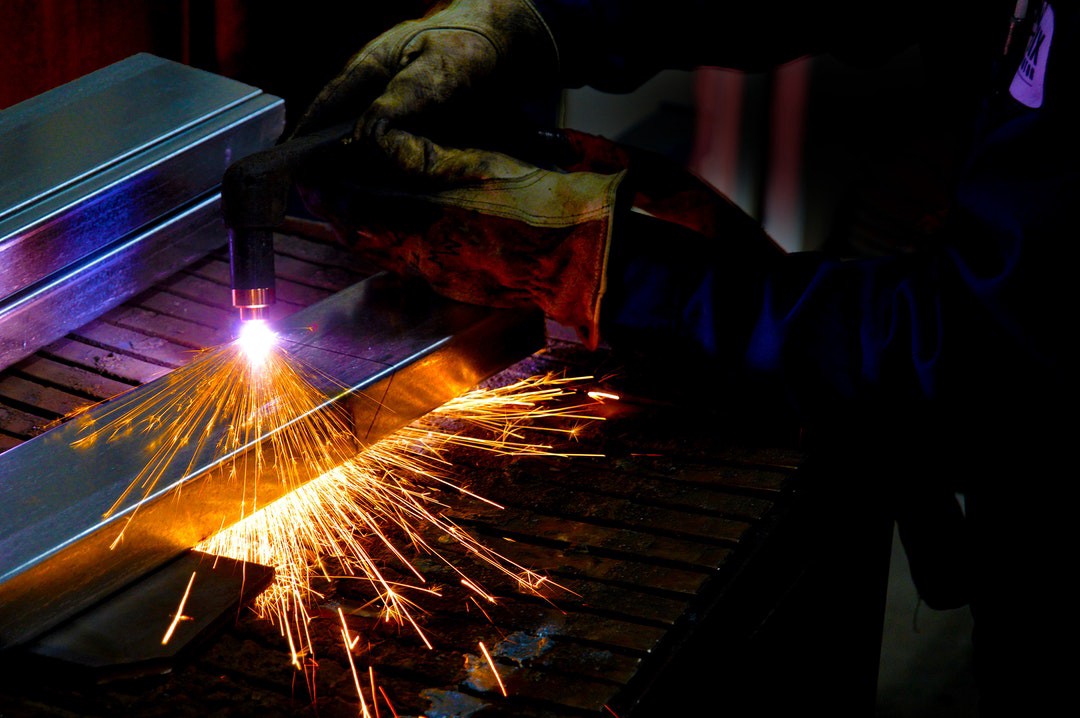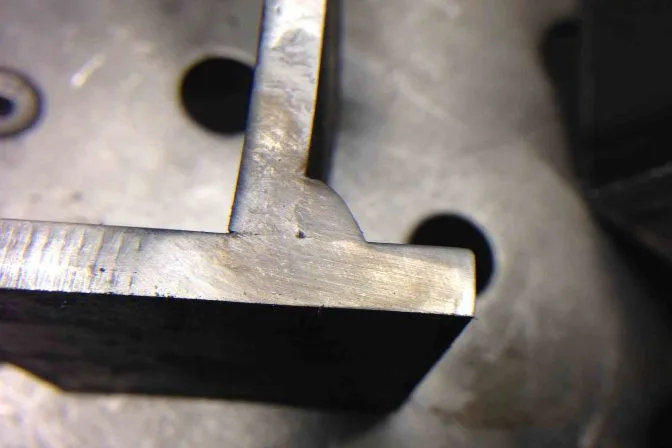Reputable Welding Inspection Gilbert Arizona: Key Factors to Take Into Consideration for Ideal Outcomes
Reputable Welding Inspection Gilbert Arizona: Key Factors to Take Into Consideration for Ideal Outcomes
Blog Article
A Comprehensive Guide to Welding Evaluation: Recognizing Specifications, Techniques, and Ideal Practices for Top Quality Assurance
Welding evaluation plays a critical role in guaranteeing the architectural stability and safety of welded elements, demanding a complete understanding of market standards such as those established by AWS and ASME. As we explore these essential elements, it comes to be evident that the implications of welding examination expand much beyond compliance, welcoming a closer examination of exactly how these procedures form sector requirements and methods.
Significance of Welding Examination
Welding examination plays an important role in guaranteeing the honesty and safety of bonded structures. It is a vital procedure that confirms that welds satisfy predefined specifications, which is vital in various industries, including building and construction, automotive, and aerospace. By carrying out complete inspections, prospective flaws such as cracks, insufficient blend, and porosity can be recognized early, protecting against disastrous failures that can cause mishaps or expensive repair work.
The importance of welding evaluation expands past plain conformity with laws; it also cultivates trust with stakeholders. Clients and governing bodies anticipate guarantee that the frameworks they rely on are constructed to withstand operational anxieties. Reliable welding examination methods contribute to lasting sturdiness and performance of the structures, ultimately leading to minimized upkeep prices.
In addition, welding inspection advertises a culture of top quality within companies, encouraging adherence to best techniques and continual renovation. By integrating inspection procedures right into the welding operations, firms can boost their online reputation and establish themselves as leaders in quality control. In final thought, the significance of welding examination hinges on its capacity to secure lives, ensure architectural reliability, and support market standards, making it an essential element of welding procedures.
Key Industry Criteria
Making sure conformity with vital industry criteria is crucial for maintaining the quality and safety of bonded structures. Numerous companies establish these requirements to promote finest practices in welding and evaluation - Welding Inspection Gilbert Arizona. Amongst the most identified are the American Welding Culture (AWS) and the American Society of Mechanical Engineers (ASME), which offer in-depth standards and specs for welding processes and assessment requirements
AWS requirements, such as AWS D1.1 for architectural welding, overview demands for products, layout, and screening to make certain the integrity of welds. Similarly, ASME codes, consisting of ASME Section IX, regulate the credentials of welders and welding procedures, ensuring regular high quality in industrial applications. Worldwide, the ISO 3834 typical emphasizes high quality needs for fusion welding, giving a framework for companies to show compliance with international best practices.
Conformity with these requirements not only enhances the reliability of welded frameworks yet additionally minimizes risks linked with structural failures. Furthermore, adherence to industry standards is typically a requirement for governing authorizations and can significantly affect task specs. Eventually, understanding and carrying out these key criteria are necessary for reliable welding inspection and quality control.
Assessment Techniques Summary
Efficient welding examination depends on a range of strategies designed to evaluate the top quality and honesty of welds. These methods can be generally classified right into non-destructive and harmful testing (NDT) approaches. Non-destructive testing strategies, which are extensively liked in the industry, enable the examination of welds without endangering the integrity of the material.

Amongst one of the most typically utilized NDT strategies are visual examination, ultrasonic screening, radiographic testing, and magnetic particle testing. Aesthetic examination is usually the very first step in the evaluation process, making it possible for examiners to recognize surface flaws and analyze weld bead profiles. Ultrasonic screening uses high-frequency sound waves to spot interior defects and determine the density of welds. Radiographic testing entails using X-ray or gamma-ray imaging to reveal inner flaws, while magnetic particle testing works for spotting surface and near-surface discontinuities in ferromagnetic materials.
Each strategy has its own benefits and constraints, making it crucial for assessors to pick one of the most appropriate method based upon the specific requirements of the job, the materials entailed, and the criticality of the welds being examined. This cautious choice guarantees extensive assessments and promotes security and top quality criteria in welding procedures.
Usual Problems and Their Implications
An extensive understanding of common problems in welds is crucial for keeping architectural integrity and safety in welded building and constructions. Welding issues can considerably jeopardize the mechanical properties of the joint, causing failings that could endanger both workers and tools.
Usual defects include porosity, which materializes as small gas pockets entraped in the weld steel, this contact form damaging the total framework. Splitting is another prevalent concern, typically arising from rapid air conditioning or improper joint design, bring about stress focus that can lead to devastating failings. Incomplete blend takes place when the weld steel stops working to correctly bond with the base material, developing weak factors that might lead to separation under load.
Other notable defects consist of damaging, where the weld bead erodes the base metal, and slag additions, which can prevent the weld's strength. Each of these issues has certain effects; for example, porosity can reduce ductility, while splitting straight impacts tensile strength. Recognizing and recognizing these issues during examination is essential for applying restorative steps and guaranteeing compliance with market criteria, ultimately protecting the structural stability of welded assemblies.
Best Practices for Quality Assurance
Implementing ideal techniques for quality guarantee in welding processes is crucial for attaining optimal outcomes and decreasing problems. One essential method is the establishment of clear welding procedures that adhere to market criteria and requirements. These treatments must include detailed directions relating to product selection, joint prep work, and welding methods to guarantee consistency and top quality.
Regular training and accreditation of welding personnel are additionally vital. Experienced welders who understand the importance of quality assurance are more probable to generate audio welds. Furthermore, implementing a robust evaluation program, consisting of both non-destructive and aesthetic screening (NDT), can assist recognize defects early in the procedure, enabling timely rehabilitative activities.

Lastly, cultivating a society of high quality within the company urges employees to prioritize top quality in their job. By sticking to these ideal techniques, companies can improve the stability of their welding processes, ultimately resulting in enhanced product high quality and lowered More Bonuses prices related to rework and repair work.

Final Thought
Finally, welding inspection plays a crucial duty in making certain the integrity and safety of bonded structures. Adherence to essential industry requirements, such as those established by AWS and ASME, is vital for reliable top quality guarantee. Utilizing various examination techniques permits for the recognition of common defects, thereby reducing possible risks. By carrying out best practices, companies can enhance dependability, minimize maintenance costs, and grow trust among customers, eventually contributing to effective welding procedures - Welding Inspection Gilbert Arizona.
In addition, welding examination advertises a society of see this high quality within companies, encouraging adherence to finest techniques and continual improvement. In conclusion, the significance of welding assessment lies in its capacity to safeguard lives, guarantee architectural integrity, and support sector standards, making it an indispensable facet of welding operations.
Amongst the most acknowledged are the American Welding Culture (AWS) and the American Culture of Mechanical Engineers (ASME), which give comprehensive guidelines and requirements for welding processes and inspection criteria.
Inevitably, understanding and carrying out these key requirements are important for efficient welding examination and top quality assurance.
Reliable welding inspection relies on a variety of techniques created to assess the quality and stability of welds.
Report this page